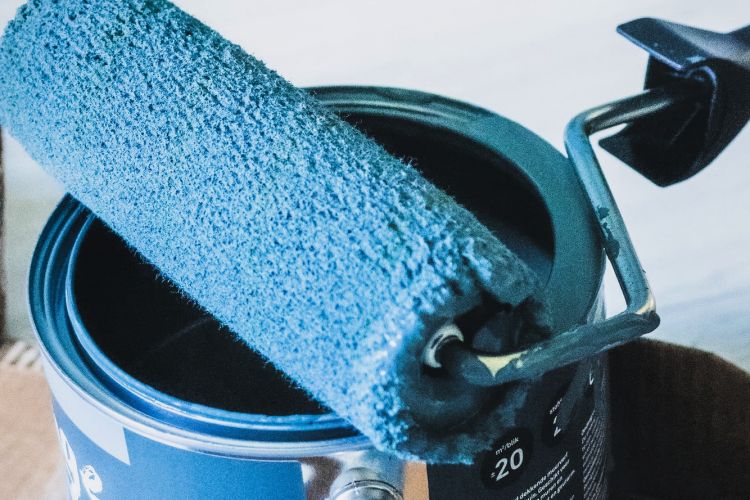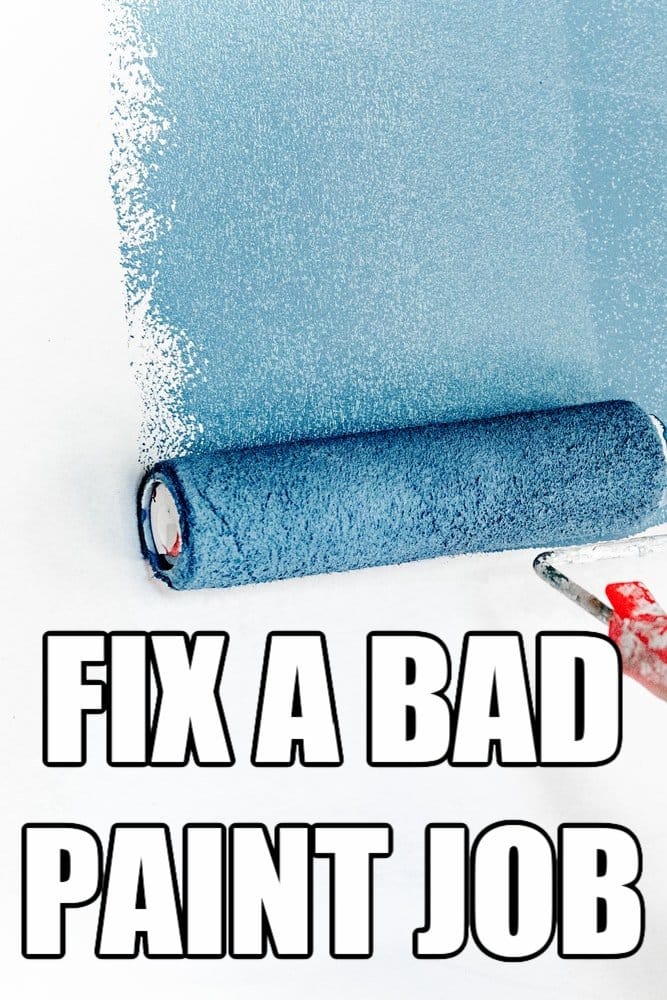Oh no, you just botched your paint job! If you’re looking for ways to fix a bad paint job, keep reading for a few simple tips and tricks.
If you’re wondering how to paint kitchen cabinets or you just want to add a fresh coat of paint to the bathroom, slow down and take your time so you don’t make any mistakes.
Don’t worry if you do mess up, everyone makes a painting mistake here or there. Even the professionals!
Painting window trim doesn’t need to be a daunting task either.
But today, we’re talking about how to fix a bad paint job.
Real Ways To Fix A Bad Paint Job
Even professional painters make the occasional mistake.
But, rather than just giving up, it’s important that you fix the mistake so it doesn’t detract from the rest of the paint job.
You don’t need to start over from the beginning or hire a professional to fix your mistake.
Here are a few simple ways to fix a bad paint job.
Don’t Mistake Paint and Drywall
By saying don’t mistake paint and drywall, I mean, don’t mistake a bad drywall job for a bad paint job.
A bad drywall job cannot be covered up even by the best professional painters. If drywall is the issue, it will need to be fixed first.
While some painters do some patchwork, the drywall is usually left to the drywall crew to fix and touch up.
“Punch lists” are usual and normal in most types of construction. So don’t freak out when the drywaller comes back to do some touchups after the primer paint goes on. This is normal.
Just know the difference, especially on a new or renovation job where subcontractors are involved.
Anyways, let’s get back to you and your DIY paint job.
Fix Paint Bubbles
Paint bubbles or blisters happen if the top coat of paint doesn’t adhere to the first coat properly.
There are many reasons, environment plays a big role, humidity, cold, heat, it can all play a factor. Dust and dirt or grease on a surface can also cause the paint not to adhere.
A big reason it happens is that people just repaint without using a new coat of primer paint.
Always prime, then finish paint, even if you’re repainting walls that were painted a number of years ago. Prime, then paint.
I like to apply two coats of finish paint after applying at least one coat of primer. This goes for both walls and ceilings.
If bubbles happen, scrape them off with a paint scraper. Then, sand it smooth with 180 grit sandpaper.
Coat with primer paint and then reapply the finish paint.
Correct drips and drops
If you have paint drips or drops that have landed on the smooth paint below, you will need to remove them to get an even coat.
Just wait until the paint is dry.
Then, scrape the drips off with a paint scraper and/or sand the area smooth again.
Repaint the area being careful to blend it completely.
Fix roller marks
If you’re painting with a paint roller, it’s very important that your roller is completely wet with paint.
Dry areas of your paint roller will go thud-thud-thud. and create an uneven paint job.
Aside from making sure your roller is wet, don’t allow it to be too wet.
Use the paint tray to even out the distribution of paint on your roller before applying it to the walls or ceiling.
Roller marks from uneven pressure, dried paint, or slipped roller heads are the two biggest things we see.
When painting, you want light, even pressure with every stroke.
You don’t want to put pressure on the inside or the outside of the roller head. Allow the paint roller to do its job.
Always keep a wet edge! Keeping a wet edge means don’t stop halfway down a wall and go for a lunch break.
If you leave that paint line/edge in the middle of the wall to dry, when you try to match it after lunch, that edge will always “flash”.
Whenever you paint a wall or ceiling, make sure to paint from one end to the other without stopping.
Don’t ever go back over tacky paint either, that will cause a big headache!
A slipped roller head. If the roller head slips off the roller, even a quarter inch, it can cause roller marks.
If you start seeing roller marks in the paint, check to make sure the roller head is on the roller properly.
Nevertheless, if you find dry paint with roller marks. Simply sand down anything that’s uneven with 180 grit sandpaper. Then prime and paint the area completely to cover up the roller marks.
Shop online for primer paint and finish paint, plus all your paintbrushes and roller needs here at Amazon.
- Like
- Digg
- Del
- Tumblr
- VKontakte
- Buffer
- Love
- Odnoklassniki
- Meneame
- Blogger
- Amazon
- Yahoo Mail
- Gmail
- AOL
- Newsvine
- HackerNews
- Evernote
- MySpace
- Mail.ru
- Viadeo
- Line
- Comments
- Yummly
- Send in Text
- Viber
- Telegram
- Subscribe
- Skype
- Messenger
- Kakao
- LiveJournal
- Yammer
- Edgar
- Fintel
- Mix
- Instapaper
- Copy Link


